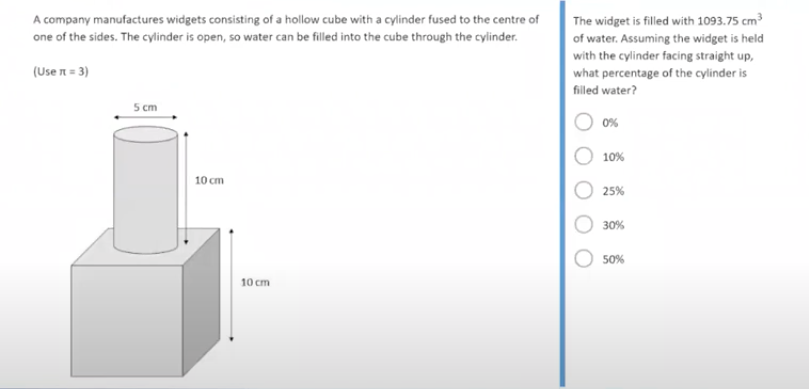What Is Quantitative Reasoning?
Quantitative reasoning involves critically evaluating various data sets and answering multiple-choice questions. It’s the part of the UCAT that tests your numeracy skills.
The quantitative reasoning section consists of 36 questions in total, which need to be answered in 26 minutes. This allows for 43 seconds per question.
Types Of Quantitative Reasoning Questions
You’ll face scenarios with data to help to solve the problems and be asked to choose one of five answers. The data could be in various forms, including tables, graphs and two/three-dimensional shapes.
These questions are designed to assess your skills in analysing data and applying it on a practical level, just as Doctors do when they make drug calculations or undertake clinical research.
How Is UCAT Quantitative Reasoning Marked?
Each quantitative reasoning question is worth one mark. Your total marks will be placed on a scale to give you a UCAT score.
Average UCAT Quantitative Reasoning Scores
Quantitative Reasoning is usually the highest-scoring section of the UCAT.
The UK average quantitative reasoning score last year was 649. For Australia and New Zealand, the average quantitative reasoning score was 667.
What Is A Good Quantitative Reasoning UCAT Score?
A good quantitative reasoning score would be above the average, which was 649 in 2023 and 658 in 2022.
Previous quantitative reasoning scores in the UK:
| Average Quantitative Reasoning Scores | 2019 | 2020 | 2021 | 2022 | 2023 | 2024 |
|---|---|---|---|---|---|---|
| 662 | 664 | 665 | 658 | 649 | 649 |
Previous UCAT ANZ quantitative reasoning scores:
| Average Quantitative Reasoning Scores | 2020 | 2021 | 2022 | 2023 | 2024 |
|---|---|---|---|---|---|
| 671 | 679 | 672 | 663 | 667 |
Learn more about how scoring works on our UCAT Scores page.
Quantitative Reasoning Strategies
When you join our UCAT Course, we’ll show you the exact area of maths that QR tests. We’ll give you some example questions, so you can see whether you’re at the right level, or if you need further support (like STEM tutoring). You should expect to handle things like ratio and portions, formulas for area and volume, percentage calculations and more.
To score highly in quantitative reasoning, you need to develop your mental maths and make sure you know how to use the UCAT calculator.
You also need to be aware of common pitfalls and how to avoid these. For example, with the QR subtest, just because an answer matches what you’ve got doesn’t mean it’s right!
And just like abstract reasoning, you need to learn when to flag a question for review and move on to the next one.
Quantitative Reasoning Example UCAT Question
A company manufactures widgets consisting of a hollow cube with a cylinder fused to the centre of one of the sides. The cylinder is open, so water can be filled into the cube through the cylinder.
Question: The widget is filled with 1093.75 cm³ of water. Assuming the widget is held with the cylinder facing straight up, what percentage of the cylinder is filled with water?
Choose the correct answer:
- 0%
- 10%
- 25%
- 30%
- 50%

